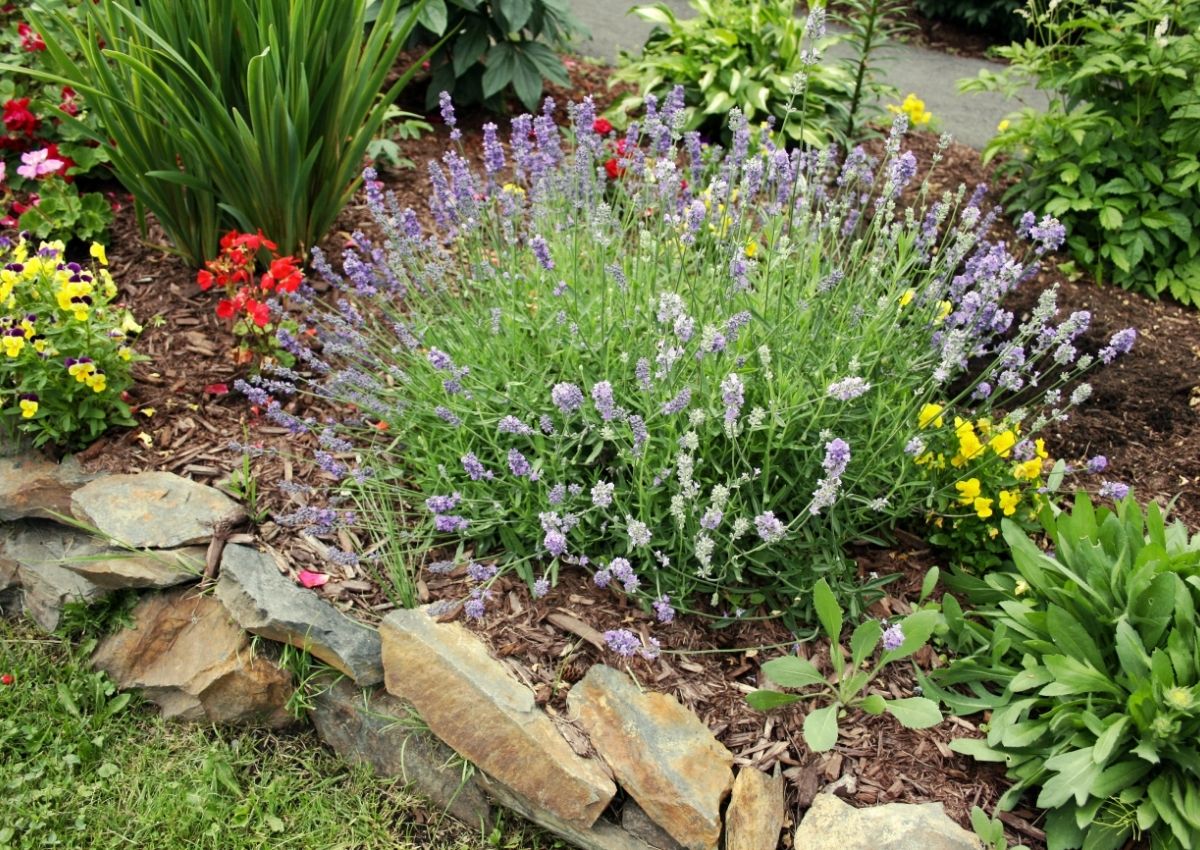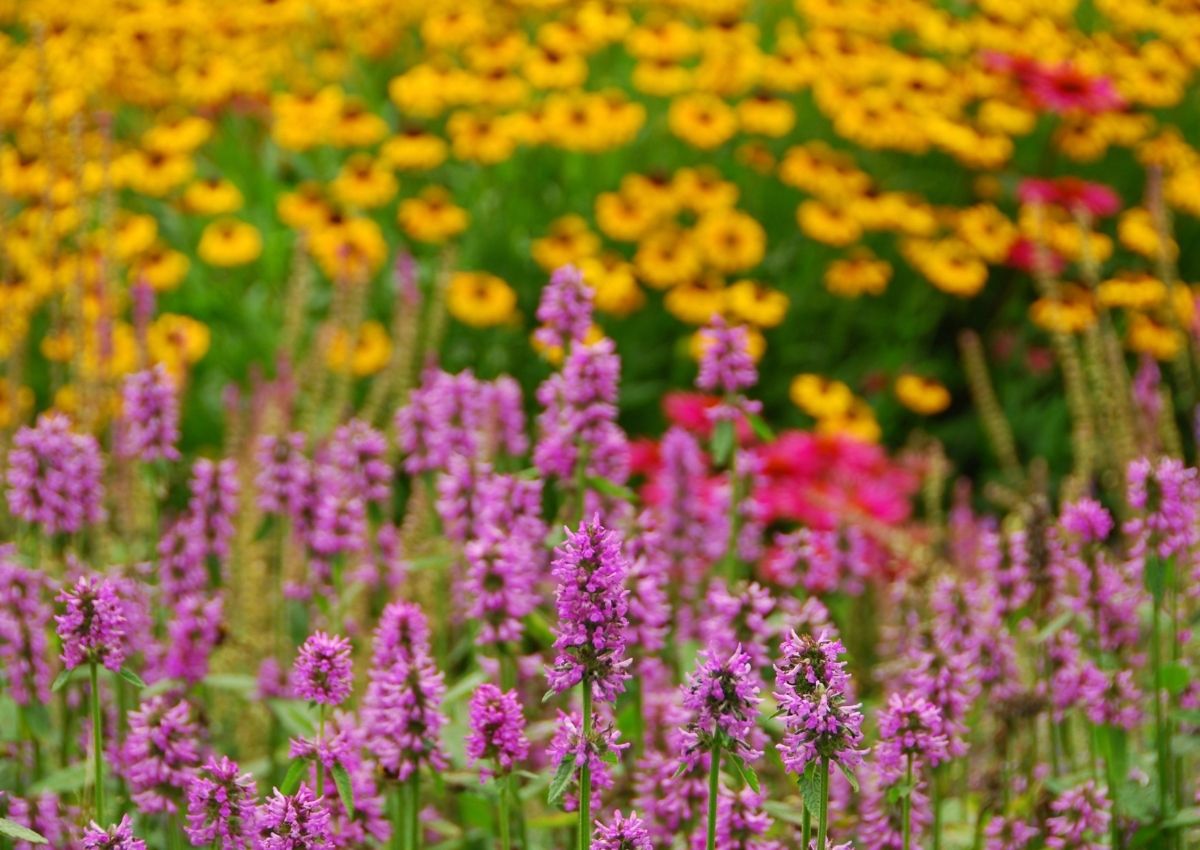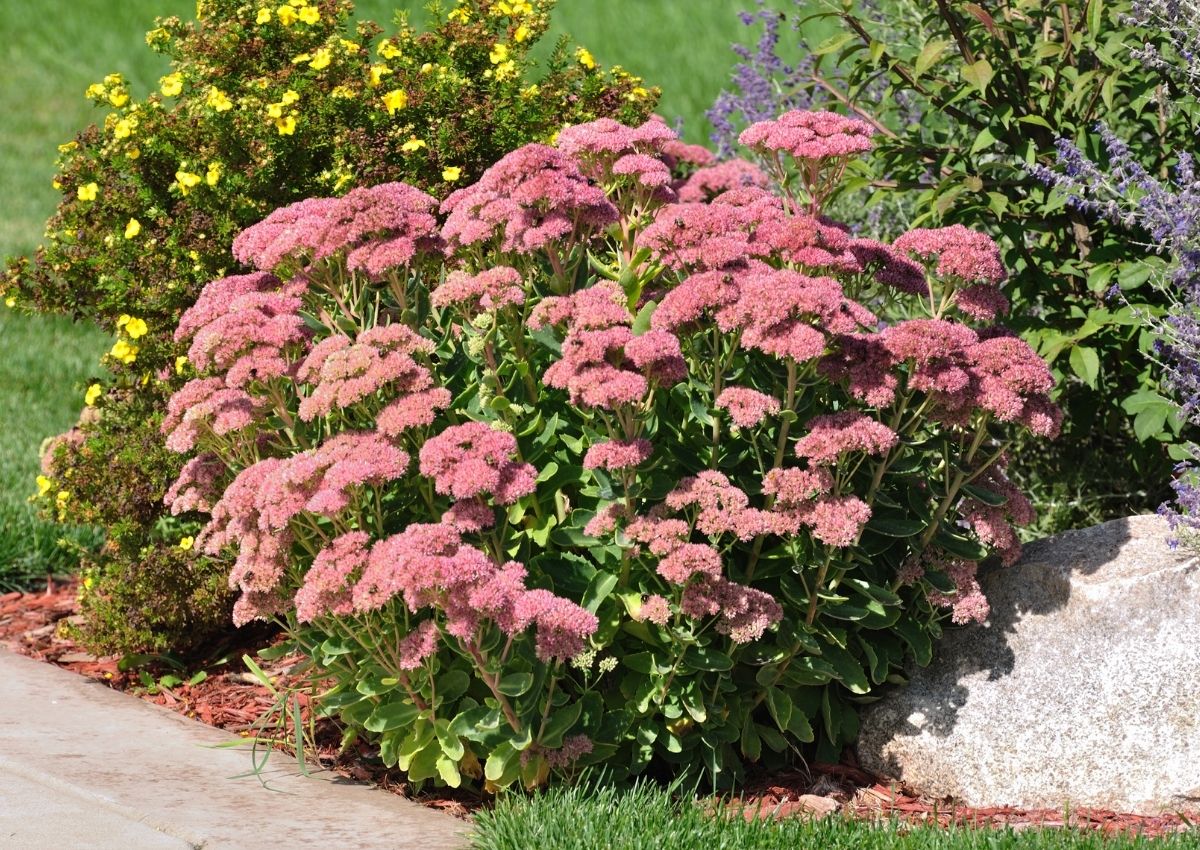What You’ll Learn:
- Coneflowers – Flower colors come in Purple, Pink, White, Red, Orange, Magenta, and Multi-colored.
- Blanket Flowers – Flowers come in different bright shades and combinations of yellow, orange, and red.
- Common Yarrow – Flowers come in white, yellow, red, and pink.
- Salvia – Flowers come in Purple, Purple-blue, Lavender, White, Pink, and Red.
- Lavender – Flowers come in Purple or, if you like, Lavender.
- Agastache Texas Hummingbird Mint – Flower color is Blue and other colors.
- Autumn Joy Sedum – Flowers come in bright Pink.
- Michaelmas Daisy – Flowers come in different shades of Purple or Pink.
Plant these 8 Great Companion Plants with Your Black-eyed Susans This Fall.
If you have Black-eyed Susan plants in your garden, then you know they like having full sun, well-draining soil, moderate to regular watering.
They also are drought-tolerant and bloom from summer into the fall months.
So, what other plants can you plant around them that have similar care needs, bloom around the same time or just after, and that would complement or contrast them with color and texture?
Read further below to find out!
If you are looking to sow perennial seeds this fall, get your seeds from EdenBrothers.com!
A trusted seed source for hundreds of heirloom, rare, and hard to find flower seeds, along with, what almost seems like an endless choice of, amazing bulbs to choose from.
Use coupon code: SPOKEN at checkout to get 15% off your next purchase!
Click here to read and find Shasta Daisy companion plants!

Coneflowers – Flower colors come in Purple, Pink, White, Red, Orange, Magenta, and Multi-colored.
- Coneflowers can be mixed in with or be in separate groupings along side Black-eyed Susans for a stellar color and texture pairing.
- Depending on the specific cultivars height and spread, you could plant these either behind, mixed in, or in front of your Black-eyed Susan’s.

Blanket Flowers – Flowers come in different bright shades and combinations of yellow, orange, and red.
- Blanket flowers share the same round, daisy flower form as Black-eyed Susans, but have a little more fuller flowers and can be brighter for a slight contrast.
- These beautiful flowers can be planted mostly in front of your Black-eyed Susans, since they are a little shorter.

Common Yarrow – Flowers come in white, yellow, red, and pink.
- Common Yarrow have a different flower form and structure than Black-eyed Susans that they are a great contrast to each other, along with pairing different flower colors together for your unique garden look.
- Plant Common Yarrow in front of your Black-eyed Susan plants for a white, yellow, red, or pink carpet of softness.

Salvia – Flowers come in Purple, Purple-blue, Lavender, White, Pink, and Red.
- Salvia can look great by either surrounding groups of Black-eyed Susan’s or the other way around, mainly because of their long spires or spikes of small flowers for a textural difference and you can go for your school’s colors.
- Whether planted on the side or in front of your Black-eyed Susan’s, Salvia can make your Susan’s the show-stoppers in your garden every time.

Lavender – Flowers come in Purple or, if you like, Lavender.
- Like Salvia, Lavender can really accentuate and bring any Black-eyed Susan’s beauty forward to any admirer with it’s spikes or spires of pink flowers, but with a softer feel than Salvia.
- Planting your Lavender away from your Black-eyed Susan plants is probably your best plan due to how fast they can grow and spread. Give your lavender plants plenty of room to spread and expand into so they don’t over grow your Black-eyed Susan’s.

Agastache Texas Hummingbird Mint – Flower color is Blue and other colors.
- Your Texas Hummingbird Mint, like Lavender or Savia, make for a really spectacular contrast in flower form and shape, but also with their bright pink color (the photo says it all).
- Make sure to plant your Texas Hummingbird Mint to the sides or in front of your Black-eyed Susan’s so they don’t get shaded out or overgrown.

Autumn Joy Sedum – Flowers come in bright Pink.
- Autumn Joy Sedums are one of the most versatile and beautiful perennials you could pair with your Black-eyed Susan’s. Their unique flower color and shape (almost flat), similar to Common Yarrow, will make highlighting either plant a truly fun experience.
- Be sure to use Autumn Joy Sedums in groupings by them selves around your Black-eyed Susan’s or mixed in with them to really make that part of your garden pop.

Michaelmas Daisy – Flowers come in different shades of Purple or Pink.
- Michaelmas Daisies are great flowers to pair with Black-eyed Susan’s because of their overlap of flowering seasons, where Michaelmas Daisies start to flower later in the summer and continue into the fall months way past Black-eyed Susans.
- Mix these two plants in groupings so when the Black-eyed Susan flowers start to fade, the Michaelmas Daisies can take over with their bright flower color to continue on into the fall months.
Also, here are great annual companion plants to have planted around your Black-eyed Susans:
- Zinnia
- Cosmos
- Asters
- Marigolds
- Petunia
If you have questions about these or other plants, we are here to help, so please email us.
Thanks for Listening!
That’s all for this podcast episode! You can find other beginning gardener topics on
our podcast page by clicking here or go to SpokenGarden.com and click on the “Listen” tab. Also find us on your favorite podcast platform and smart speaker!
Share our show or follow us on
Subscribe on
*Spoken Garden is a participant in the Amazon Services LLC Associates Program, an affiliate advertising program designed to provide a means for sites to earn advertising fees by advertising and linking to Amazon.com.
Some of the resources and products below may be affiliate links, meaning we might get paid a commission (at no extra cost to you) if you use that link to make a purchase.
- Black-eyed Susan Care: A Mini Plant Profile – DIY Garden Minute Ep.159 (podcast)
- Checkout and Order our New Book: 1st Time Gardener: Growing Plants and Flowers.
- Want to get started, but not sure on what? Go to our Start-Here Page!









